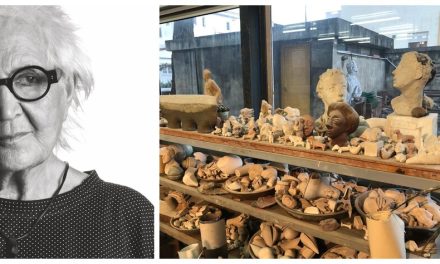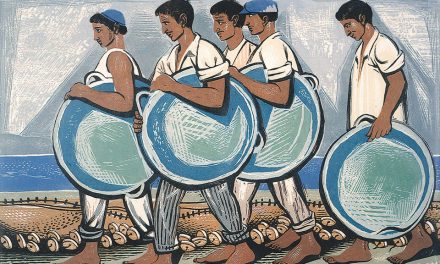Yiannis Bouteas’s exhibition, “Stratifications – Transformations,” is currently running at the Archaeological Museum of the Saronic island of Poros. The exhibition is co-organized by CITRONNE Gallery in collaboration with the Ephorate of Antiquities of Piraeus and Islands. Art historian Dr. Tatiana Spinari-Pollali and archaeologist Dr. Maria Giannopoulou co-curate the exhibition. CITRONNE Gallery is also presenting Yiannis Adamakos’s solo exhibition “In Between” (both exhibitions run until September 21). It’s a great opportunity to visit Poros, the greenest island of the Argosaronic Gulf. Its beauty has been celebrated by artists, poets and writers alike. The town of Poros is known for its charming neoclassical buildings (cover photo, visitgreece.gr), while pine forests blanket the island’s hills, reaching all the way down to its sandy beaches.
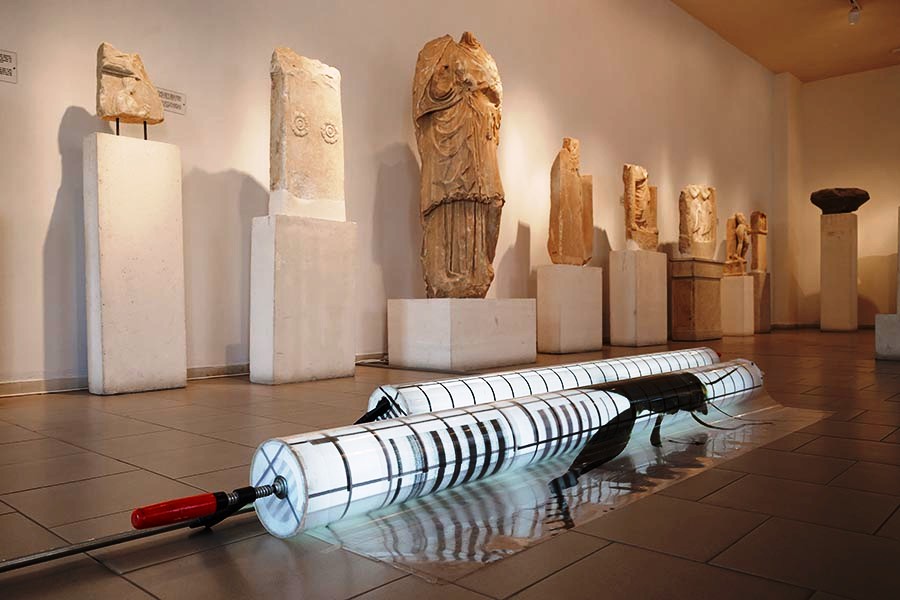
“Stratifications – Transformations” is an exhibition that focuses on the concept of timelessness, as it is conceived and expressed through the power of contemporary art. Bouteas’s objects-symbols, coming directly from everyday life, start a dialogue with the ancient objects of the archaeological museum, and may initially surprise the visitor. A man of antiquity would probably feel a similar surprise if he saw his personal objects in the museum displays today, accompanied by scientific theories and (mis)interpretations. (Source: citronne.com/en) (Photo Credit: Installation view, ©Yiorgos_Brousalis)

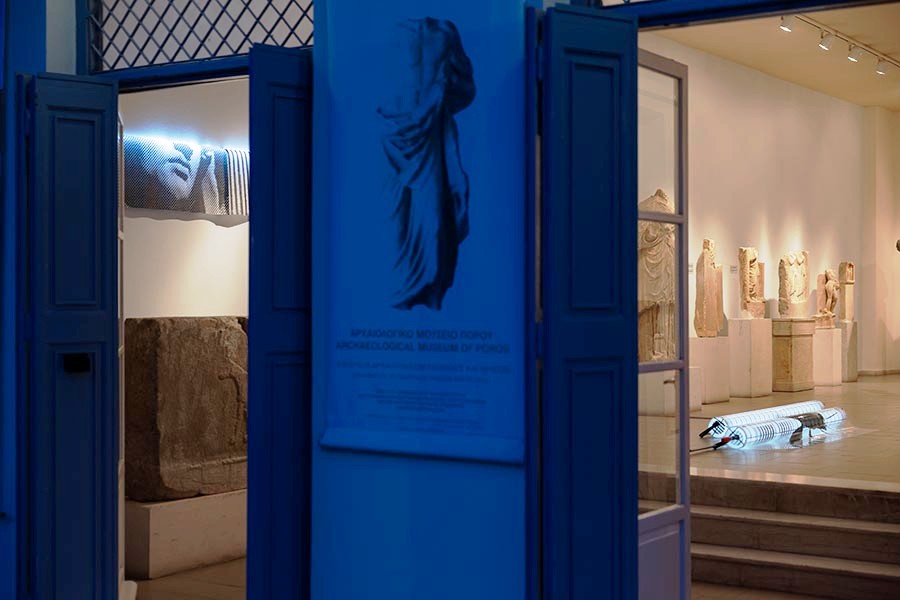
The artist challenges the commonly accepted perception of time as a linear unfolding reality and creates his own timeless Museum. Fragmented, oversized digital prints of images depicting ancient sculptures are juxtaposed with archaeological artifacts, serving as a hyper-analyzed and distorted representation of our past. Utilitarian objects from everyday life—both from the present and the recent past—are combined with natural rocks and geological strata, all wrapped in images of artworks. These elements form a composition of contrasting symbols, each carrying its own distinct charge, all grounded in a visual aesthetic framework. Serving as a threshold for all of this is a barcode motif—an allusion to the inescapable digital reality that now dominates every aspect of our lives. (Source: culturenow.gr) (Photo Credit: Installation view, ©Yiorgos_Brousalis)
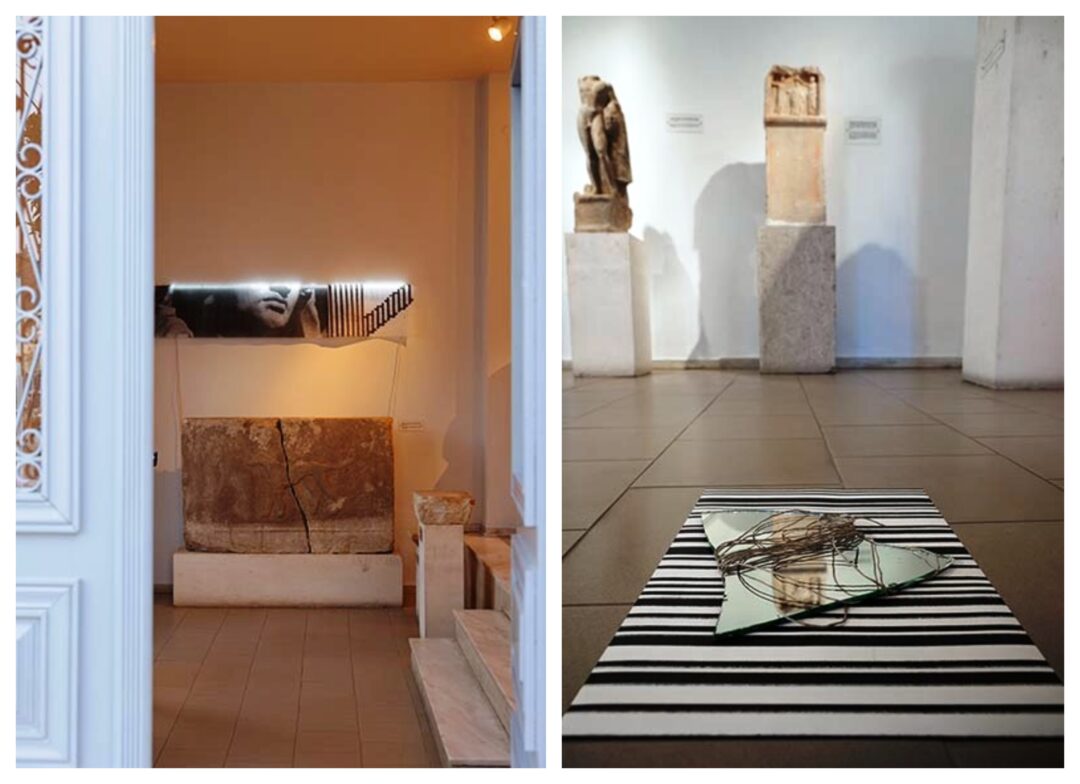

Bouteas’s installation ultimately seems like an unexpected preview of an archaeological museum of the – perhaps not so distant – future. (Photo Credit: Installation view, ©Yiorgos_Brousalis)
Citronne Gallery Poros, housed in an 18th century austere example of island architecture on the promenade of Poros, opened in the summer of 2006. The name of the gallery refers to the well known lemon grove of Poros. Α determining element to Citronne’s identity deriνes from its location. Poros is an atypical island with a transitory nature. Α Saronic island in close distance to Athens, its proximity and economic and social interaction to the Peloponnesian coast across it, and its large and inviting natural harbor, make Poros, as its name suggests, a ‘passage’. Citronne aspires to be a ‘passage’: a destination, a focal point, a place for assembly and exchange of ideas. Citronne Gallery Athens, which commenced its activity in November 2018, continues—and widens—the endeavor begun in Poros.
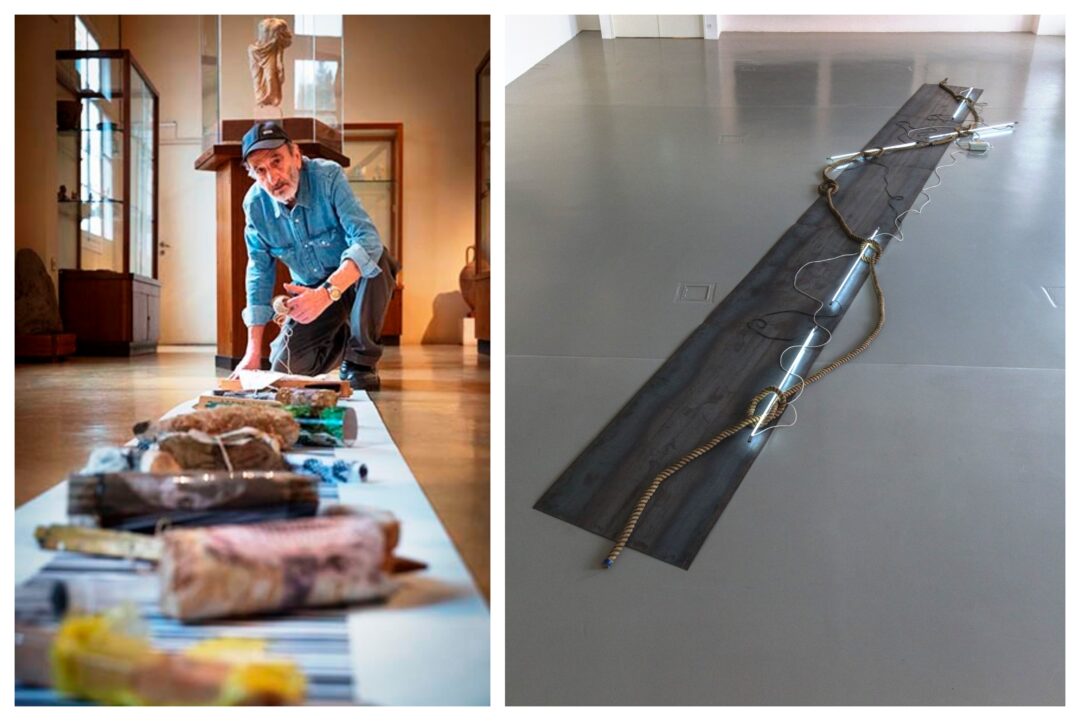
Yiannis Bouteas at the Archaeological Museum of Poros, ©Yiorgos_Brousalis (left). “Untitled”, 1974-80, installation including rope, neon and iron, Collection National Museum of Contemporary Art, Athens (EMST). Exhibition ANTIDORON, The EMST Collection, Fridericianum, Kassel, 2017, photo Nils Klinger
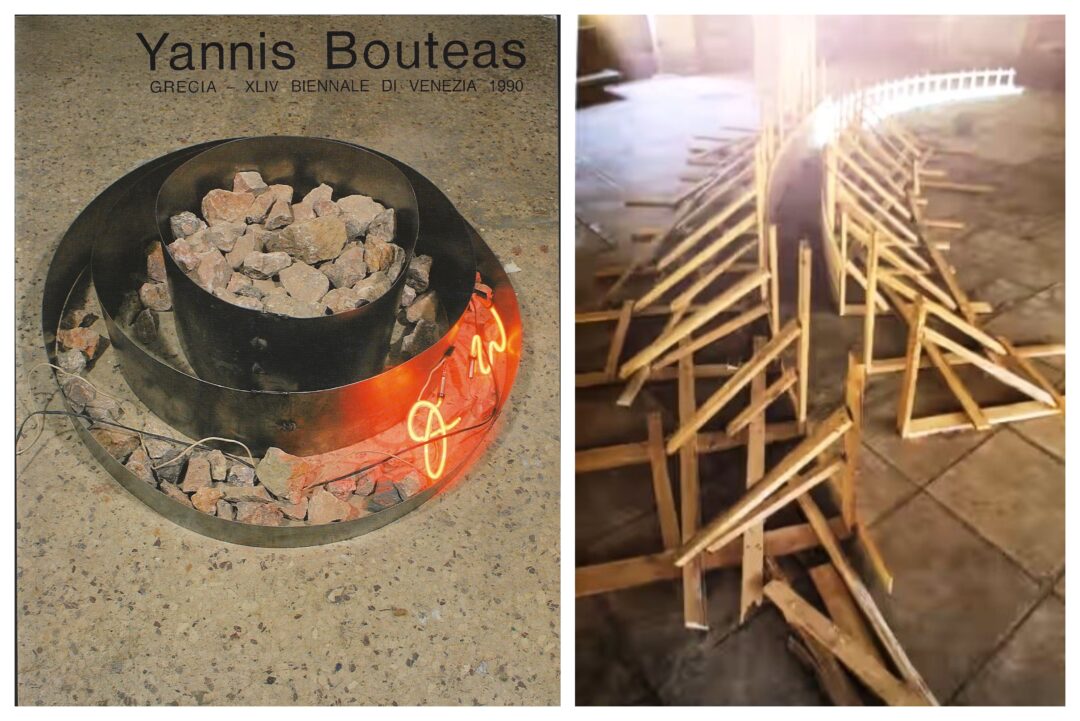
Yiannis Bouteas represented Greece at the Greek Pavilion during the 44th Venice Biennale in 1990, alongside Georges Lappas, with Manos Stefanidis serving as commissioner. Bouteas exhibited works from the “Anaptygmata” (“Developments” or “Unfoldings”) series and the “Tomes” (“Sections” or “Cuts”) series. Materials used in these works included sheet metal, iron, stones, and neon light. These works reflected Bouteas’s interest in form, materiality, modularity, and spatial dynamics. The use of industrial and geological materials, alongside the luminous element of neon, aligned with his broader sculptural and conceptual exploration.
Yiannis Bouteas (Kalamata, 1941) studied printmaking at the Athens School of Fine Arts (1959-64) and continued his studies at the École des Beaux-Arts in Paris (1966-70), where he lived for ten years. His work includes constructions and installations, with light – whether natural or artificial – serving as his primary expressive medium, often in the form of neon tubes. The poor materials he selects (ropes, strings, stones, iron sheets, playdough, rubber, asphalt, and later mirrors), retain their autonomous expressive and conceptual power while becoming part of a larger artistic gesture. His compositions are typically spread across the floor or walls. Bouteas participated in the art group Processes-Systems (1976) and has presented his work in numerous solo exhibitions. He represented Greece at the São Paulo Biennale (1981), the Venice Biennale (1990), and the Kassel Documenta (2017). In 2007, he created the work Layerings-Energy Images XVI for the Kerameikos station of the Athens Metro. (Source: Contemporary Greek Art Institute, ISET)
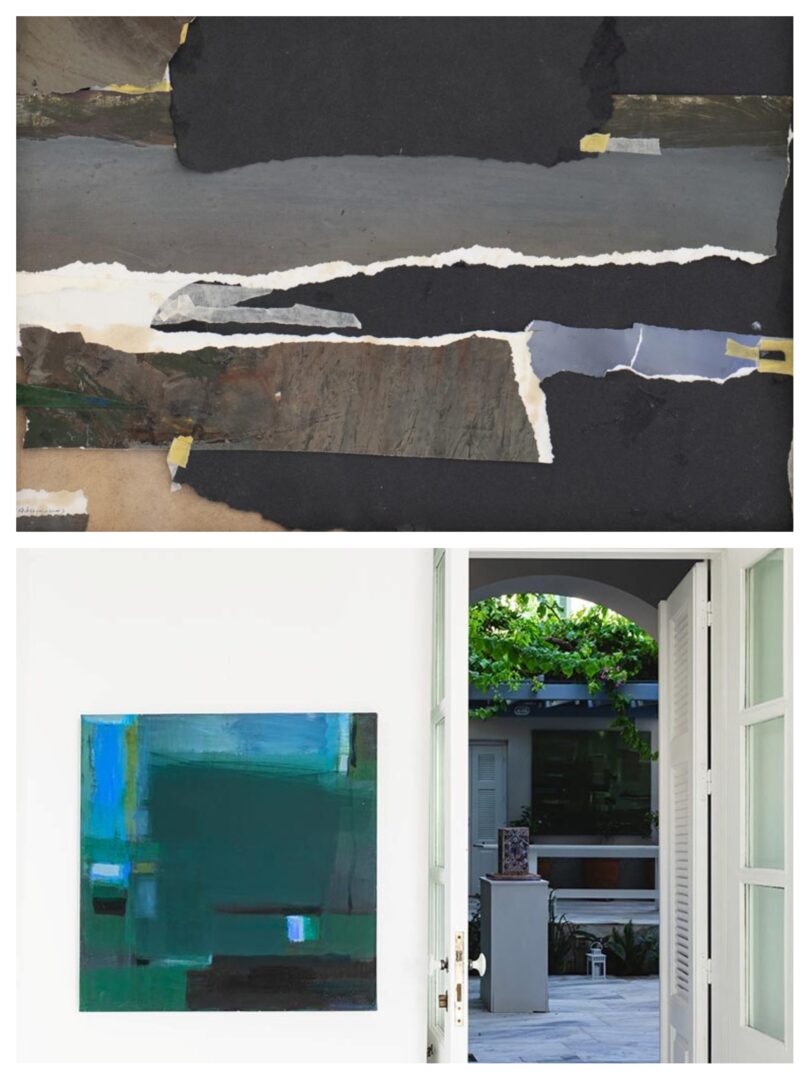
CITRONNE Gallery – Poros also presents Yiannis Adamakos’s solo exhibition “In Between”( June 14 – September 21, 2025). One of the most distinguished figures in abstract Greek painting, Yiannis Adamakos creates indeterminate landscapes—reflections of a sensory world refracted through memory. He is deeply engaged in exploring the boundaries between explosion and calmness, light and darkness, spontaneity and order. He is particularly concerned with the rendering of emptiness, as a space imbued with richness of meaning and sensation. (Photo: Yiannis Adamakos, In Between 16, 2025, Mixed media, 32×42 cm, ©Vagelis_Zavos)
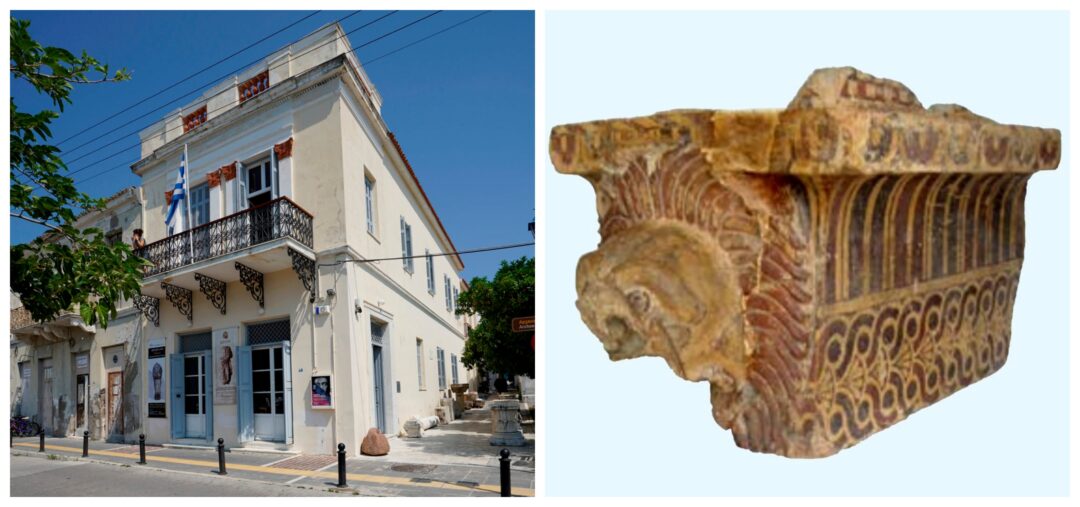
The Archaeological Museum of Poros was built in 1967-1968 at the site of the old residence of Alexandros Koryzis (Prime Minister of Greece in 1941)( feft). There are two exhibition galleries in the Museum, one on the ground and one on the upper floor, hosting exhibits from the entire Troezenian region (Poros, Galatas, Troezen-homeland of the Athenian hero Theseus, Methana and other areas) as well as some finds from older excavations at Hermione. A 6th c. BC clay sima from the sanctuary of Aphrodite Akraia at Troezen is particularly impressive, given that it preserves its painted decoration and a lion-head spout (right).
Poros is the greenest island of the Argosaronic Gulf. The Poros Strait, and the seaside area of Galata with its pine, olive, and lemon groves surround the picturesque Poros town, where beautiful neoclassical buildings grace the seafront. The visitor can also explore the inland; go biking and hiking through Poros’ pinewoods. (Source: visitgreece.gr)
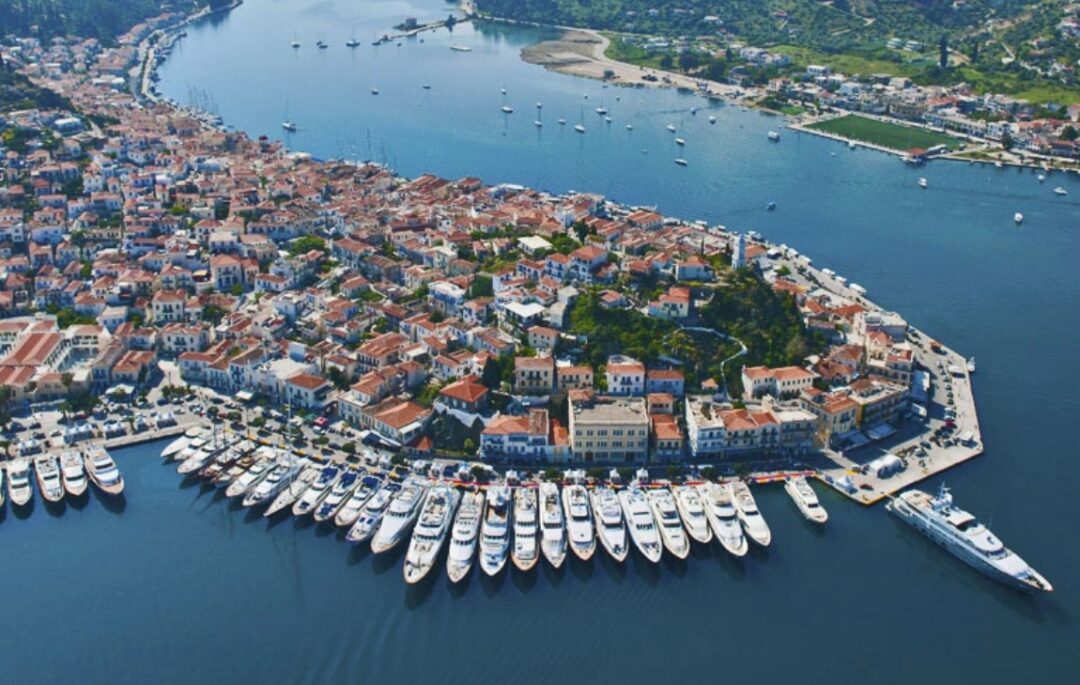
Poros town and the harbour area have been built on the hillside, opposite the shores of Troezenia. The town’s picturesque alleys, Neorio, and Bourtzi Islet are some of the must-visit places on the island. The visitor is impressed by the neoclassical style of most buildings. The clock tower of Poros is the island’s landmark, located on the hilltop, and surrounded by prickly pear trees and pine trees. This spot offers an amazing view of the harbour, the shores of the Peloponnese, and the lemon tree forest. (Photo: visitgreece.gr)
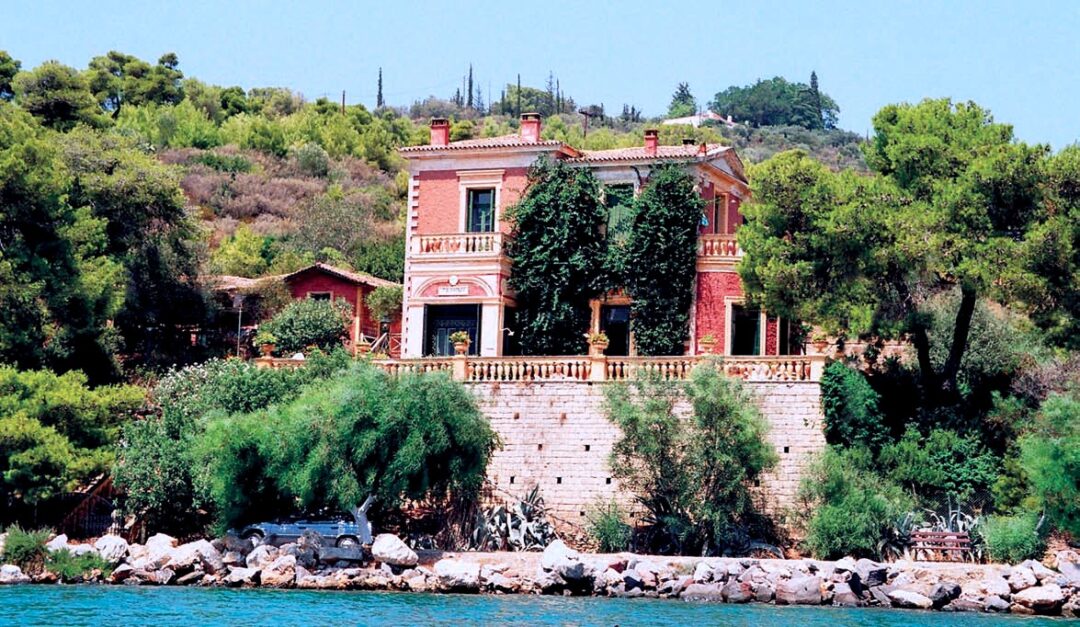
At the Red House (Villa Galini), the imposing stone mansion built in 1892 by architect Anastasios Metaxas (the architect who restored the Panathenaic Stadium in Athens) on the coast between Poros and Galatas, prominent figures were hosted during the summers—among them Eleftherios Venizelos (Greek statesman and prominent leader of the Greek national liberation movement) in 1931. Many famous artists, poets, and writers were hosted at Villa Galini. Among them George Horton, Marc Chagall, Henry Miller, Greta Garbo, James Merrill, and Peter Gray, Lucian Freud enjoyed the solitude and the stillness of the site enchanted by the unique light of Poros and found inspiration in the beauty of the landscape. (Source: visitporos.com)
The great Greek poet George Seferis (Nobel Prize in Literature, 1963) lived in Galini from 1946 to 1949. “Galini, that Victorian house, Pompeian red, gave me for the first time after many years the feeling of a solid home, not a temporary camp: that makeshift stuff I had grown used to thinking was no longer built,” the poet writes in a letter included in his Essays (1962). At Galini, he also wrote the poem “Kichli” (1946), borrowing its title from the small boat that used to anchor in front of the romantic house.
Κίχλη Γ’ (Thrush)
…
Sing little Antigone, sing, O sing. . .
I’m not speaking to you about things past, I’m speaking about love;
adorn your hair with the sun’s thorns,
dark girl;
the heart of the Scorpion has set,
the tyrant in man has fled,
and all the daughters of the sea, Nereids, Graeae,
hurry toward the shimmering of the rising goddess:
whoever has never loved will love,
in the light;
and you find yourself
in a large house with many windows open
running from room to room, not knowing from where to look out first,
because the pine trees will vanish, and the mirrored mountains, and the chirping of birds
the sea will empty, shattered glass, from north and south
your eyes will empty of the light of day
the way the cicadas all together suddenly fall silent.
Poros, ‘Galini’, 31 October 1946
Copyright Credit: George Seferis, “’Thrush’” from Collected Poems ( (Princeton University Press, 1995), translated, edited, and introduced by Edmund Keeley and Philip Sherrard. (Source: poetryfoundation.org )
Poros is the ideal destination for water sports and outdoor activities such as swimming. Don’t miss the beautiful beaches at Mikro Neorio and Megalo Neorio, as well as the romantic ‘Cove of Love’. Go diving in the crystal clear waters or sailing around the nearby islands and along the coast of the Peloponnese. For those who enjoy inland adventures, Poros also offers great opportunities for biking and hiking through its scenic pine forests.
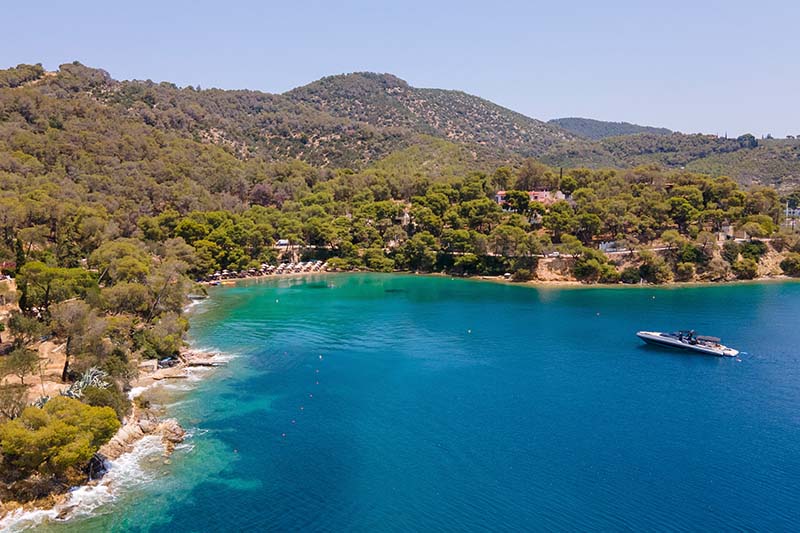
Love Bay is a beautiful small bay surrounded by trees, which will captivate the visitor’s mind and heart (Source: visitporos.com)

The Russian Bay is a beautiful and picturesque bay, which is classified as a historical monument, because of its great architectural and historical interest. The old Russian Naval Dockyard is located there, at 5km NW of the town and the harbour. The original structures included warehouses and bakeries built to provide for the needs of the Russian Fleet stationed there back in 1834.Today it is a beach where unforgettable summer concerts take place every year. (Source: visitporos.com)
Read more:
Visual Arts in Greece: 1950s–1990s – Part 3/6- “From Sculpture to Energy”
I.A.
TAGS: ARCHAEOLOGY | ARTS | EXHIBITIONS | TOURISM




